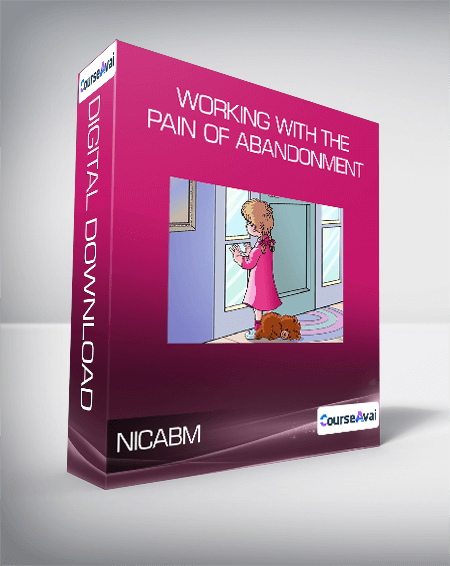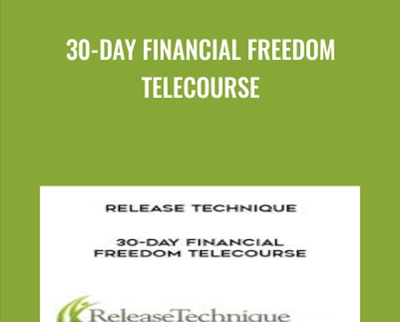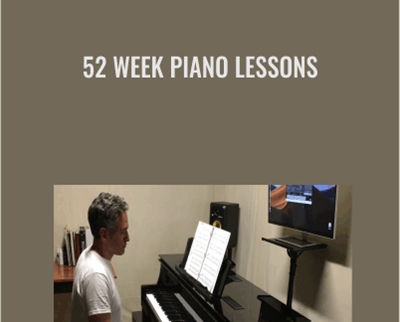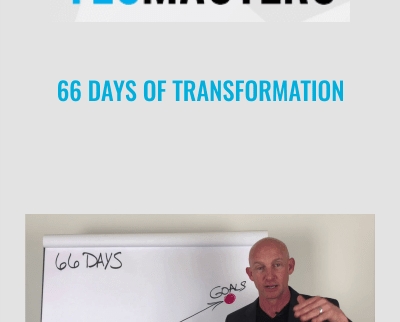Buy NICABM – Working with the Pain of Abandonment Course at GBesy. We actively participate in Groupbuys and are committed to sharing knowledge with a wider audience. Rest assured, the quality of our courses matches that of the original sale page. If you prefer, you can also buy directly from the sale page at the full price (the SALEPAGE link is directly provided in the post).
NICABM – Working with the Pain of Abandonment course with special price just for you: $97 $35
NICABM – Working with the Pain of Abandonment
Working with Abandonment: 26 Top Experts Share the Latest Strategies to Help Clients Heal
Being abandoned hurts. In the moment, it can feel like you can’t breathe and that life is about to end. And then comes the painful sensations that ripple through the body and fill you with paralyzing panic.
When this happens to a client, they can become fearful of ever experiencing abandonment again. Problem is, they can then develop harmful coping strategies that not only create more pain, but put them at even greater risk of being rejected.
So how do we work with the desperate behavior and hair-trigger nervous system that can make abandonment a self-fulfilling prophecy?
We turned to the world’s 26 top experts to hear how they work with clients who have been abandoned. Here are the latest strategies that you can start using in your work today.
Working with the Pain of Abandonment

How to Work with Clients Who Are Hypersensitive to Rejection
Peter Levine, PhD Ron Siegel, PsyD
Judson Brewer, MD, PhD Melanie Greenberg, PhD
- The specific neural pattern that fuels a fear of abandonment
- One way to help clients shift out of a rejection-oriented mindset
- How to work with a client’s panic when being rejected

Key Strategies for Working with Abandonment and Trauma
Bessel van der Kolk, MD Peter Levine, PhD
Kelly McGonigal, PhD Resmaa Menakem, MSW, LICSW, SEP
Melanie Greenberg, PhD
- How PTSD can lead to powerful brain schemas that invite rejection from others
- One practice to help clients with panic disorder regulate their body when triggered by abandonment
- How trauma-informed neurofeedback can neutralize reactivity to an experience of rejection

How to Approach Shame That Drives a Fear of Rejection
Dan Siegel, MD
- How the ruminating brain can lock clients into ambivalent relationships that invite shame
- How to work with clients whose sense of defectiveness fuels a fear of abandonment

How to Recondition a Nervous System Damaged by Abandonment
Stephen Porges, PhD Deb Dana, LCSW
- How abandonment leaves a deep tracing on the nervous system (and what this means for treatment)
- Why the nervous system will often sabotage offers to co-regulate
- How to help a client’s nervous system tolerate ruptures in a relationship

How to Read the Abandonment Story Your Client’s Body Is Telling
Pat Ogden, PhD Bonnie Goldstein, PhD Deb Dana, LCSW
- How to recognize possible signs of early life abandonment in your client’s body
- How a client’s physiology can reveal the way they’re managing a fear of abandonment

Ways to Change Fearful Behavior That Sets a Client Up for Further Abandonment
Pat Ogden, PhD Melanie Greenberg, PhD Ron Siegel, PsyD
Donald Meichenbaum, PhD Terry Real, MSW, LICSW
- Two specific ways a client’s fear of abandonment can become a self-fulfilling prophecy
- How to reframe a client’s neediness to make it an ally in their healing
- How to help a client stay regulated when their partner rejects their needs

How to Help Clients Stop Sacrificing Their Boundaries to Avoid Being Abandoned
Joan Borysenko, PhD Kelly McGonigal, PhD Ron Siegel, PsyD
Judson Brewer, MD, PhD Melanie Greenberg, PhD Pat Ogden, PhD
- The addiction model that leads a client to soften their boundaries (and how to change it)
- The painful reason why some clients will gamble away their principles in a relationship
- Two practical ways to help clients shore up their personal boundaries

A 3-Step Strategy to Expand a Client’s Tolerance of Rejection
Steven Hayes, PhD Kelly McGonigal, PhD
- How to help clients engage their fear of abandonment without getting overwhelmed
- How to adjust your treatment of abandonment when the client dissociates
- A compassionate strategy to help clients break a paralyzing fear of abandonment

How to Treat A Fear of Abandonment Linked to Betrayal
Shelly Harrell, PhD Richard Schwartz, PhD Stan Tatkin, PsyD, MFT
- One way to reduce the stigma and humiliation a client attaches to their experience of betrayal
- The damaging way clients often approach decisions when they fear loss
For This Short Course on How to Work with a Client’s Pain of Abandonment, We Brought Together Some of the Top Experts in the Field

Dan Siegel, MD
Executive Director of the Mindsight Institute; Co-Director of UCLA’s Mindful Awareness Research Center; author of Mindsight: The New Science of Personal Transformation and The Mindful Therapist: A Clinician’s Guide to Mindsight and Neural Integration

Bessel van der Kolk, MD
Neuroscientist and Professor of Psychiatry at Boston University Medical School. Author of The Body Keeps the Score: Brain, Mind, and Body in the Healing of Trauma

Peter Levine, PhD
Founder of Somatic Experiencing; Author of Trauma and Memory: Brain and Body in a Search for the Living Past: A Practical Guide for Understanding and Working with Traumatic Memory

Pat Ogden, PhD
Pioneer in Somatic Psychology; Founder and Director of Sensorimotor Psychotherapy Institute (SPI); Co-founder of the Hakomi Institute; Author of Sensorimotor Psychotherapy: Interventions for Trauma and Attachment
Shelly Harrell, PhD
Licensed Psychologist specializing in multicultural and community psychology; A Professor with the Pepperdine Graduate School of Education and Psychology
Joan Borysenko, PhD
Founder of Mind/Body Health Sciences LLC; Author of New York Times Bestseller Minding the Body, Mending the Mind
Stephen Porges, PhD
Developer of Polyvagal Theory; Distinguished University Scientist at the Kinsey Institute at Indiana University Bloomington and Research Professor in the Department of Psychiatry at University of North Carolina Chapel Hill
Steven Hayes, PhD
Creator of Acceptance and Commitment Therapy (ACT); Nevada Foundation Professor at the Department of Psychology at the University of Nevada, Reno
Rick Hanson, PhD
Senior Fellow of the Greater Good Science Center at UC Berkeley; New York Times bestselling author of Hardwiring Happiness and Buddha’s Brain
Ron Siegel, PsyD
Assistant Clinical Professor of Psychology, part time, Harvard Medical School; Author of The Mindfulness Solution: Everyday Practices for Everyday Problems and Sitting Together: Essential Skills for Mindfulness-Based Psychotherapy
Get immediately download NICABM – Working with the Pain of Abandonment
Kelly McGonigal, PhD
Health psychologist and lecturer at Stanford University; Author of The Upside of Stress: Why Stress Is Good for You and How to Get Good At It and The Willpower Instinct: How Self-Control Works, Why It Matters, and What You Can Do to Get More of It
Donald Meichenbaum PhD
Creator of Cognitive Behavioral Modification (CBM); Contributor to the development of Cognitive Behavioral Therapy (CBT); author of Roadmap to Resilience: A Guide for Military Trauma Victims and Their Families.
Stan Tatkin, PsyD, MFT
Founder of the PACT Training Institute and developer of a Psychobiological Approach to Couple Therapy (PACT)
Lynn Lyons, LICSW
Author of Anxious Kids, Anxious Parents: 7 Ways to Stop the Worry Cycle and Raise Courageous & Independent Children, clinical social worker and psychotherapist specializing in anxiety in adults and children
Deany Laliotis, LICSW
Director of Training at EMDR Institute; Specialist in treatment of traumatic stress disorders and attachment issues; author of chapters and articles on EMDR therapy
Terry Real, MSW, LICSW
Founder of the Relational Life Institute; author of I Don’t Want to Talk About It: Overcoming the Secret Legacy of Male Depression and The New Rules of Marriage: What You Need to Make Love Work
Richard Schwartz, PhD
Founder of Internal Family Systems (IFS) and The Center for Self Leadership
Melanie Greenberg PhD
Clinical Psychologist and Author of The Stress-Proof Brain
Judson Brewer MD PhD
Founder of Claritas MindSciences; Formative leader in combining mindfulness and neurofeedback techniques for working with addiction; Author of The Craving Mind
Michael Yapko, PhD
Leading expert in clinical hypnosis and treating depression; Clinical psychologist and author of 15 books including his newest books, The Discriminating Therapist and Keys to Unlocking Depression
BONNIE GOLDSTEIN PHD
Founder and Director of the Lifespan Psychological Center; Co-author of Understanding, Diagnosing, and Treating AD/HD in Children and Adolescents
Deb Dana LCSW
Coordinator of the Traumatic Stress Research Consortium at the Kinsey Institute; Developer of the Rhythm of Regulation Clinical Training Series; author of Polyvagal Theory in Therapy
Resmaa Menakem MSW LICSW SEP
Expert on conflict and violence; Teacher of Cultural Somatics; Former Director of Counseling Services for the Tubman Family Alliance; Former Behavioral Health Director for African American Family Services in Minneapolis
Onno van der Hart PhD
Psychotraumatologist and Emeritus Professor of Psychopathology of Chronic Trauma; Co-Author of Treating Trauma-Related Dissociation and co-author of The Haunted Self
Laurel Parnell, PhD
Leading expert in Eye-Movement Desensitization and Reprocessing (EMDR); Author of Attachment-Focused EMDR: Healing Relational Trauma
Bill O’Hanlon, LMFT
Co-developer of Solution-Oriented Therapy; Psychotherapist, speaker, and author of Do One Thing Different: Ten Simple Ways to Change Your Life
Here’s What You’ll Get:
Everything is yours to keep forever in your professional library
| Downloadable videos so you can watch at your convenience, on any device | |
| Audio recordings you can download and listen to at home, in the car, at the gym or wherever you like | |
| Professionally-formatted transcripts of the sessions, to make review and action simple | |
| Three downloadable bonus videos to help you work with a Client’s Pain of Abandonment |
Get 3 Bonuses That Give You Even More Strategies for Working with a Client’s Pain of Abandonment

Bonus 1
How to Work with Children Who Have Separation Anxiety
Pat Ogden, PhD Stephen Porges, PhD
Lynn Lyons, LICSW Bill O’Hanlon, LMFT
- The parenting paradox that can often lead to insecure children
- How to adjust external reassurances during a separation to fit the child
- Two factors that have the greatest impact on a child’s ability to separate from their parents
- How to reframe a child’s fear so they can problem solve and become more flexible in life

Bonus 2
How to Establish Strong Therapist-Patient Boundaries with Clients Who Have Been Abandoned
Deany Laliotis, LICSW Pat Ogden, PhD Judson Brewer, MD, PhD
Deb Dana, LCSW Onno van der Hart, PhD
- 5 strategies to help clients heal from abandonment without sacrificing therapeutic boundaries
- How to structure between-session contact that nourishes the client’s nervous system while honoring clinical boundaries
- How the practitioner-patient therapy model could be amplifying a client’s fear of abandonment (and how to adjust it)
- How to foster healthy co-regulation with clients without compromising your boundaries

Bonus 3
How to Repair Early Life Abandonment Through EMDR
Laurel Parnell, PhD
- A two-prong approach with EMDR to help clients heal from both trauma and a negative attachment history
- A powerful visualization exercise that can help clients repair painful areas of abandonment in their development
Starting Today, This Program Can Change the Way You Practice
. . . I feel so fortunate to have this access to brain power, experience and research synthesis . . .
“When I listen to the experts talk openly about their experience, I feel so fortunate to have this access to brain power, experience and research synthesis on cutting edge issues! I go back to the videos to reinforce things that will assist my clients.”
Mary Logan, Counselor
Ipswich, MA
I benefit, my practice benefits, and most important my clients benefit . . .
“I live in Nova Scotia and have limited travel funds at the university at which I work. The series provided by NICABM gives me the rare opportunity to listen to the leaders in the field. As a result, I learn valuable information that would not otherwise be available to me. I benefit, my practice benefits, and most important my clients benefit from the knowledge and wisdom I gain from the series.”
David Mensink, PhD Counseling Psychology, Psychologist
Halifax, Nova Scotia, Canada
. . . some dare to go the extra journey to research and educate
“These NICABM series keep me afloat, in touch, on track, well trained in my field, and more personally healthy. The best aspect, though, is that I feel validated and comforted knowing that some dare to go the extra journey to research and educate, so I can walk the path to health, and can share with others.”
Mary Corsello-Vilcheck, LCSW
Midlothian, VA
Course Director
Ruth Buczynski, PhD
Dr. Ruth Buczynski is a licensed psychologist and founder and president of The National Institute for the Clinical Application of Behavioral Medicine (NICABM). NICABM helps physicians, nurses, psychologists, social workers, and counselors – practitioners who have some of the most significant and life-changing missions on the planet – provide cutting-edge, research-based treatment strategies to their patients. For more than 25 years, NICABM has offered accredited training and professional development programs to thousands of practitioners worldwide.
Why the Transcript Is Essential:
Click the image to enlarge
Image opens in lightbox
The transcript makes it easy to go back and double check concepts, citations and names that are mentioned
We put in a table of contents to make it easy for you to find the exact part of the webinar you need
Having the concepts already written allows you to take notes on how you’re going to use the ideas rather than transcribing the ideas
Some people simply learn better by reading than by listening or watching
You will be able to print out and share techniques presented in the session with your patients
Angela Lawrence
“I really liked being able to follow along with the transcripts as I listened…it was nice not to feel like I had to take notes. I really feel like I remember more when I both hear and see at the same time.”
Mary Ellen McNaughton, Masters in Counseling, Psychology Counselor
Kelowna, British Colombia, Canada
Get NICABM – Working with the Pain of Abandonment download
NICABM|NICABM – Working with the Pain of Abandonment|Working with the Pain of Abandonment
Buy the NICABM – Working with the Pain of Abandonment course at the best price at GBesy.. After your purchase, you will get access to the downloads page. You can download all the files associated in your order at here and we will also send a download notification email via your mail.
Unlock your full potential with NICABM – Working with the Pain of Abandonment courses. our courses are designed to help you excel.
Why wait? Take the first step towards greatness by purchasing NICABM – Working with the Pain of Abandonment courses today. We offer a seamless and secure purchasing experience, ensuring your peace of mind. With our trusted payment gateways, Stripe and PayPal, you can confidently complete your transaction knowing that your financial information is protected.
Stripe, known for its robust security measures, provides a safe and reliable payment process. With its encrypted technology, your sensitive data remains confidential throughout the transaction. Rest assured that your purchase is protected.
PayPal, a globally recognized payment platform, offers an additional layer of security. With its buyer protection program, you can feel confident in your purchase. PayPal ensures that your financial details are safeguarded, allowing you to focus on your learning journey.
Is it secure? to Use of?
- Your identity is completely confidential. We do not share your information with anyone. So it is absolutely safe to buy the NICABM – Working with the Pain of Abandonment course.
- 100% Safe Checkout Privateness coverage
- Communication and encryption of sensitive knowledge
- All card numbers are encrypted using AES at relaxation-256 and transmitting card numbers runs in a separate internet hosting atmosphere, and doesn’t share or save any data.
How can this course be delivered?
- After your successful payment this “NICABM – Working with the Pain of Abandonment course”, Most of the products will come to you immediately. But for some products were posted for offer. Please wait for our response, it might take a few hours due to the time zone difference.
- If this happens, please wait. The technical department will process the link shortly after. You will receive notifications directly by e-mail. We appreciate your wait.
What Shipping Methods Are Available?
- You will receive a download link in the invoice or YOUR ACCOUNT.
- The course link always exists. use your account to login and download the NICABM – Working with the Pain of Abandonment course whenever you need.
- You only need to visit a single link, and you can get all the NICABM – Working with the Pain of Abandonment course content at once.
- You can do your learning online. You can be downloaded for better results and can study anywhere on any device. Make sure your system does not sleep during the download.
How Do I Track Order?
- We always notice the status of your order immediately after your payment. After 7 days if there is no download link, the system will automatically complete your money.
- We love to hear from you. Please don’t hesitate to email us with any comments, questions and suggestions.
![GBesy [GB] GBesy [GB]](https://www.gbesy.com/wp-content/uploads/2023/05/gbesy-Logo-full-100.png)



 Purchase this course you will earn
Purchase this course you will earn 






Reviews
There are no reviews yet.